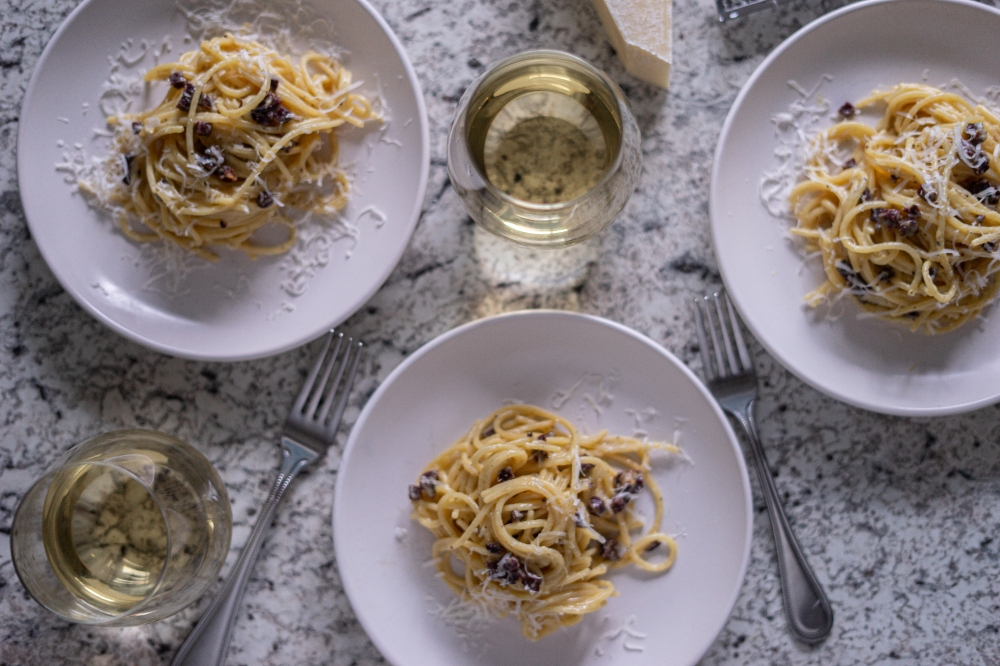I was hesitant to say the least when I undertook an attempt at a wild game carbonara. Carbonara has a cult following, and if you stray from tradition, you might be left swimming with the fishes. I also realize that the average hunter, or human probably won’t have a cured bear cheek at the ready. Nevertheless, I tried to do the dish justice from a wild food stand point, and I think I nailed it.
If you by chance find yourself in the position of harvesting a bear, consider taking the cheek meat. They can be removed while preparing the skull for cleaning, and yield a good amount of meat. Each cheek can tote around as much meat as a large goose breast, and give you a real glimpse of the muscle behind those powerful jaws. I cured them using a brine recipe from The Meateater Fish and Game Cookbook. Then smoked to an internal temp of 160*F to kill any trichinosis parasites.
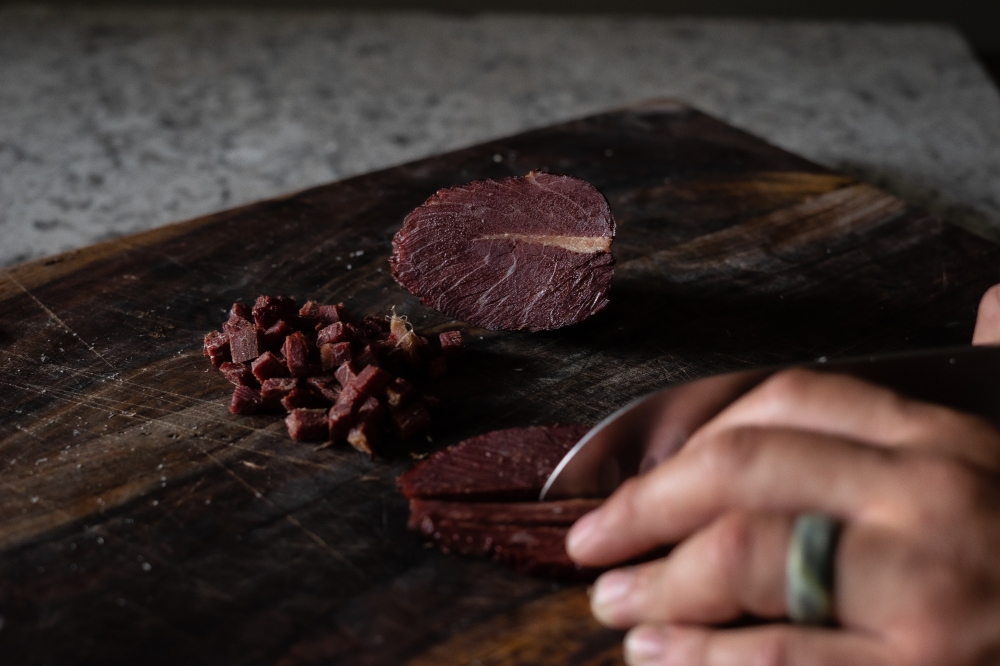
The use of bear cheek in the Carbonara is in lieu of the traditional Guanciale, cured pork cheek. Whilst Guanciale is not smoked, the bear cheek doesn’t seem to add any overbearing smoke flavor to the dish. Since the bear cheek is very lean in comparison to Guanciale, I added bear lard to the skillet to brown the cheek in. The fat is a key ingredient in making the texture right, and is usually rendered out when the Guanciale is in the pan. It seems to be accepted in some traditional circles to also use prosciutto, bacon, salt pork, or typical jowl to make Carbonora, but don’t you dare reach for the cream!!! The creamy texture of this dish comes from the technique, timing, and beautiful emulsification of the eggs, fat, cheese, and pasta water. Please don’t let this dish intimidate you, it can be whipped up very easily any night of the week.
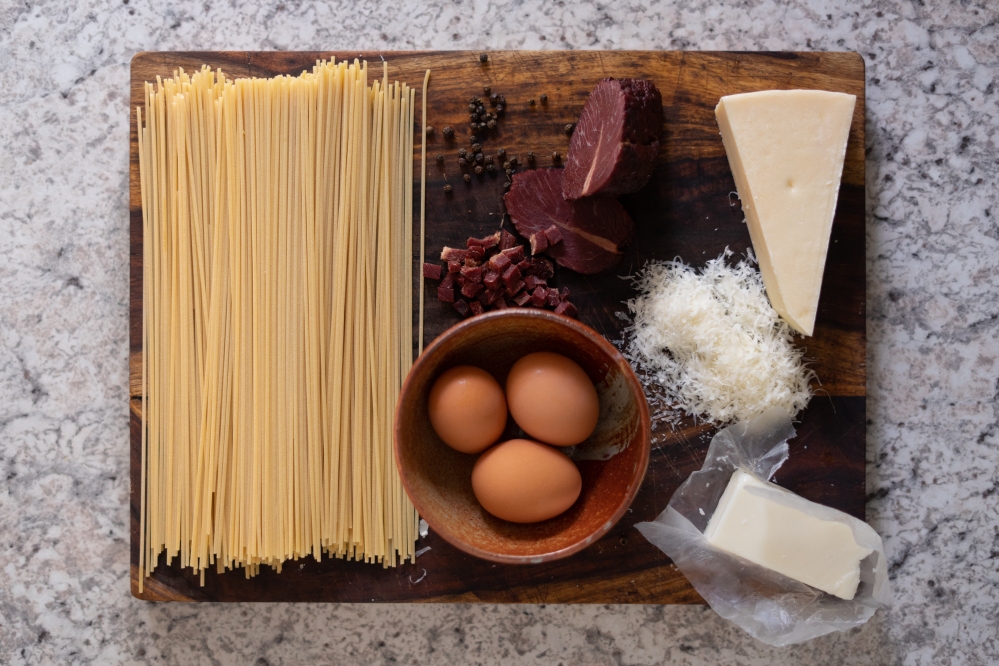
Ingredients
- 4 oz finely cubed bear cheek (or whatever you got…….)
- 1 lb dry spaghetti
- 3 Egg Yolks
- 1 t peppercorns
- 3 Cloves Garlic
- 3 T Bear Fat
- Salt for pasta water
- 1/4 C Pecorino Romano
Time to Make: 15-20 Min Serves: 4
Step 1
Generously salt boiling water for spaghetti. About 1/2 T per quart of water should be perfect. Bring to a boil.
Step 2
In a cold skillet, add lard and cubed bear cheek. Place on a burner set to medium heat. To slowly melt the fat, and gently crisp up the cheek. Then drop the pasta in the water at this time.
Step 3
While the pasta and cheek are cooking, finely grate the Romano, and add to a small bowl with the egg yolks and mix together.

Step 4
Freshly crush the peppercorns with a pepper mill, or beneath a hard flat object.
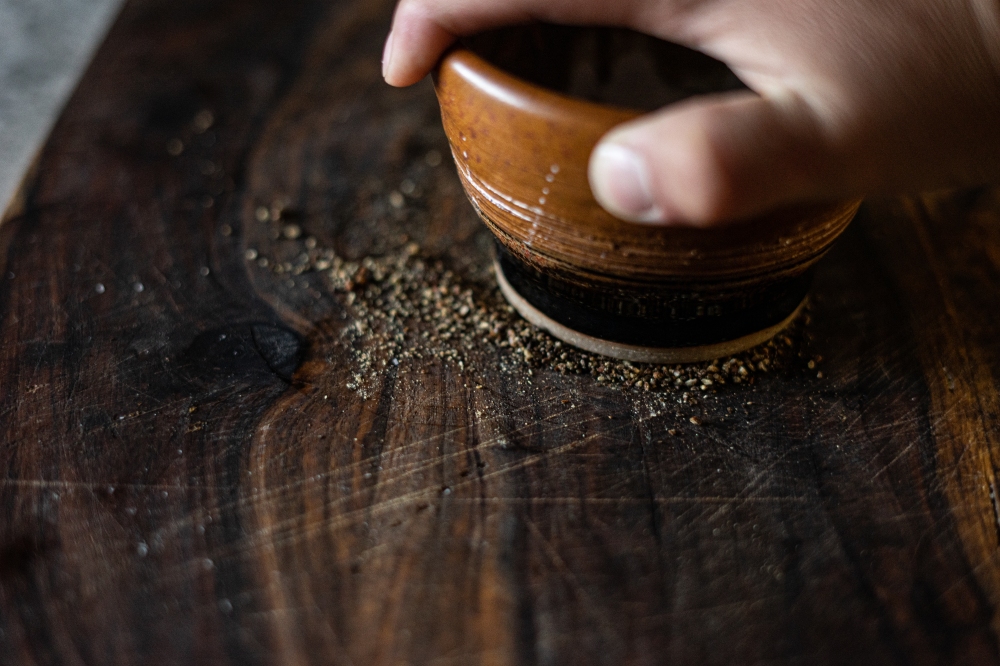
Step 5
When the meat starts sizzling, crush garlic cloves and add to cheek.
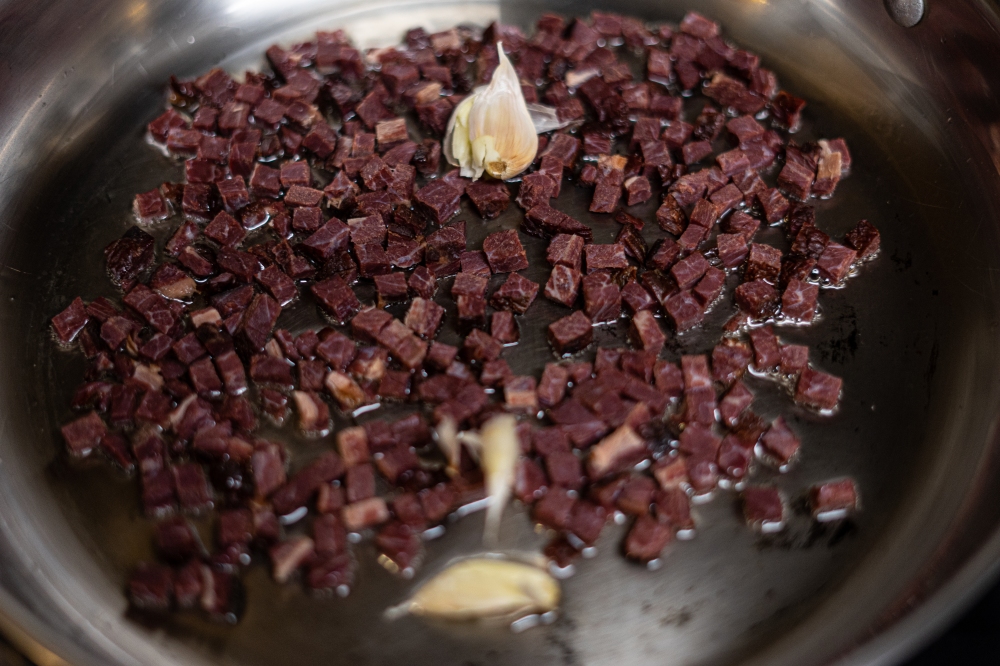
Step 6
When the Spaghetti has cooked al dente, pull out with tongs and drop the pasta right into the skillet. The goal of this is to use the water in the pasta to stop the sizzle of the oil and bring the temperature of the pan down. Add a couple extra splashes of pasta water after the spaghetti is in the pan. This will also provide the dish with salt. (fish out the garlic cloves, or don’t…..)
Step 7
Now that the pan has some moisture and the temp has dropped, pull from the burner, pour in the egg and Romano mixture and quickly start tossing in the pasta to avoid “scrambling the egg”. After a few tosses, and some confidence that egg is mixed in well with the pasta you can return to heat, but make sure to keep tossing the pan. Add the pepper at this time.
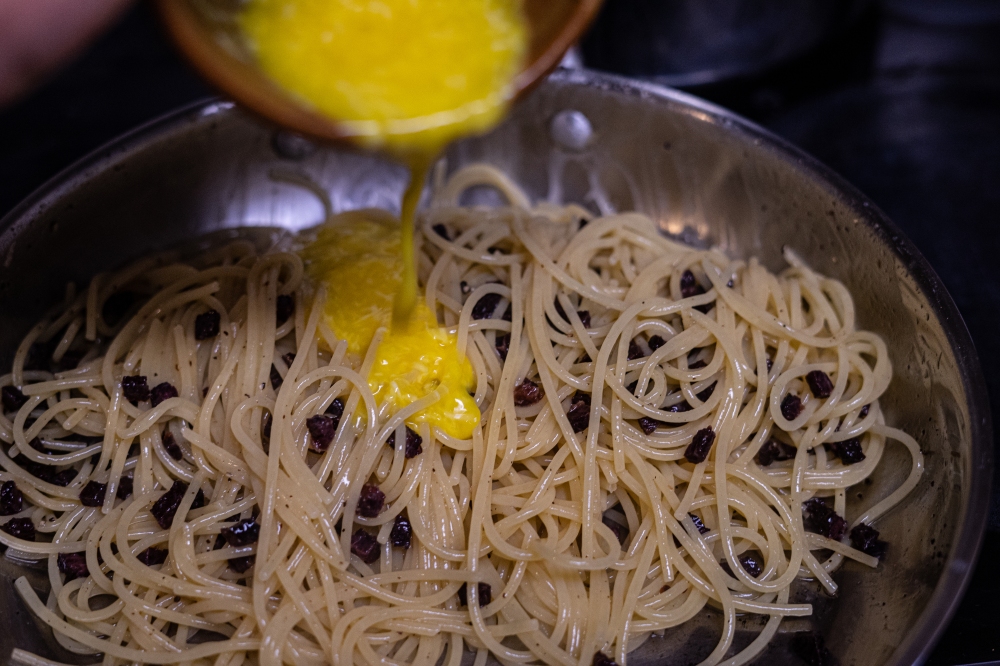
Step 8
Toss for a minute or two, being sure that the mixture is trying to simmer if you pause. Add a splash of water here or there if needed, the mixture should visibly start to emulsify and become creamy. The sauce should be a little on the thin side, for when it cools down a bit it will thicken up.
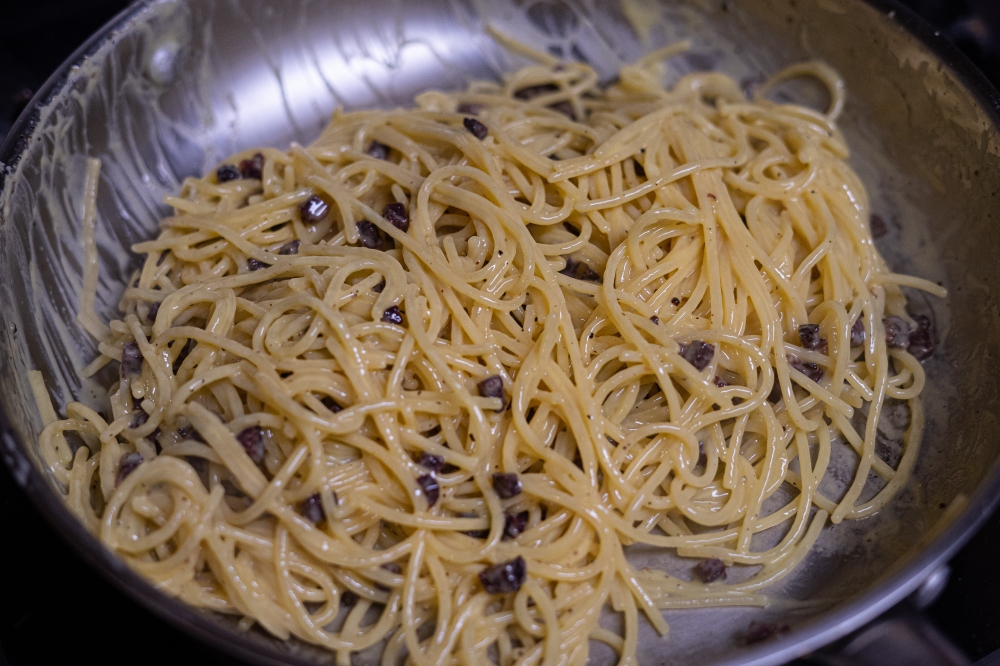
Step 9
When the sauce is developed, pull from the burner and plate. Grate more Romano on top and serve!
